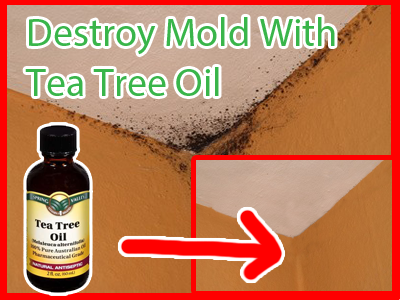 When you think of professional mold removal, what comes to mind? Many people think of harsh industrial chemicals with possible side effects. People who are more health-conscious are especially likely to seek alternative solutions when they face a mold problem in their home or business.
When you think of professional mold removal, what comes to mind? Many people think of harsh industrial chemicals with possible side effects. People who are more health-conscious are especially likely to seek alternative solutions when they face a mold problem in their home or business.
The truth is, every home and business owner should be concerned about the methods used to remove mold. Dealing with a mold infestation is important, since mold itself presents significant risks to your health and to the value of your property. But you also want to avoid creating new risks as a result of your mold removal efforts.
So—what about the many natural mold removal techniques being discussed today? You may have heard a friend or neighbor talking about vinegar, tea tree oil or other substances that can be used to curb mold without harming the environment or posing health risks. You also may have noticed the many articles and blog posts available on this topic.
Let’s take an honest look at some of the most popular alternative mold treatments, including their strengths and weaknesses.
1. Tea Tree Oil and Other Extracts
Tea tree oil, derived from a tree in Australia, is now being used all over the world in various scalp cleansers, lotions and other beauty products. Many people love the scent and the tingling sensation it provides.
Tea tree oil is in fact a fungicide with anti-bacterial properties. It’s entirely natural and eco-friendly, and some people claim to have had great results removing mold with it. You’ll also hear people talking about grapefruit seed extract and other natural extracts, such as citrus.
While these oils and extracts have a fresh scent and do weaken mold colonies, there is no research to show that they are viable solutions for treating serious mold infestations. If they were, professionals would have made the switch long ago!
2. Vinegar
This is probably the most frequently used alternative solution—mainly because vinegar is inexpensive and readily available at any supermarket. It has acidic properties due to the process of fermentation that creates it, is non-toxic to your home environment (when used correctly), and it is far more effective than tea tree oil. White vinegar has been known to kill up to 75% of spores when applied correctly to mold. The down side? Eradicating three quarters of the mold spores is not enough for serious infestations, and the colony can easy regroup. Vinegar can also leave a strong odor for days to come.
3. Hydrogen Peroxide
The name may not sound eco-friendly, but this product does qualify as a natural mold treatment. When applied correctly, it has a corrosive effect that damage the surface of mold and weakens infestations considerably. If you have a porous surface, hydrogen peroxide can be a good solution because the fizz allows it to work into the pores, instead of merely acting on the surface. It’s cheap and relatively safe (although the normal precautions when handling hydrogen peroxide should always be taken). Watch out for delicate surfaces, however, because certain materials can be damaged by applying too much hydrogen peroxide.
5. Baking Soda
This is another cheap and readily available product that can be used to treat mold with no adverse effects to your health. You may already use baking soda as a deodorant, and it’s commonly an ingredient in toothpaste so we know it’s relatively safe. The reality is that baking soda is good for many things, and can even treat mild mold problems—but you’ll have a hard time knocking out mold colonies for good using only this product.
Which alternative solution will work best for you?
As we’ve seen, there are a number of natural solutions out there, and some of them can be surprisingly effective when applied to many types of mold. How effective a given treatment will be depends on a number of important factors, including the type of mold and the extent of the colony. Remember—there is more to most mold problems that meets the eye. A qualified mold removal specialist will be able to help you determine the extent of the problem, and should be happy to discuss both professional and DIY solutions for getting rid of mold effectively.
Thanks for reading! If you have any questions about the information presented here, please feel free to leave them in the space below and we’d be happy to respond.

